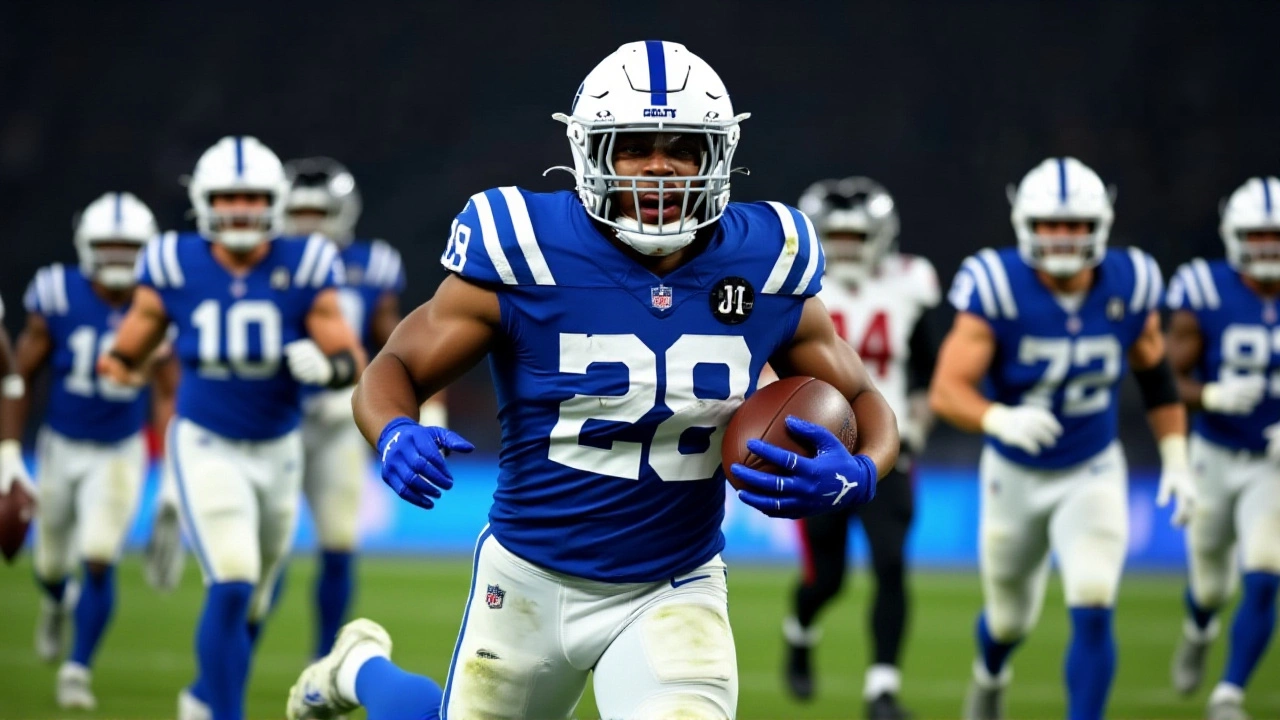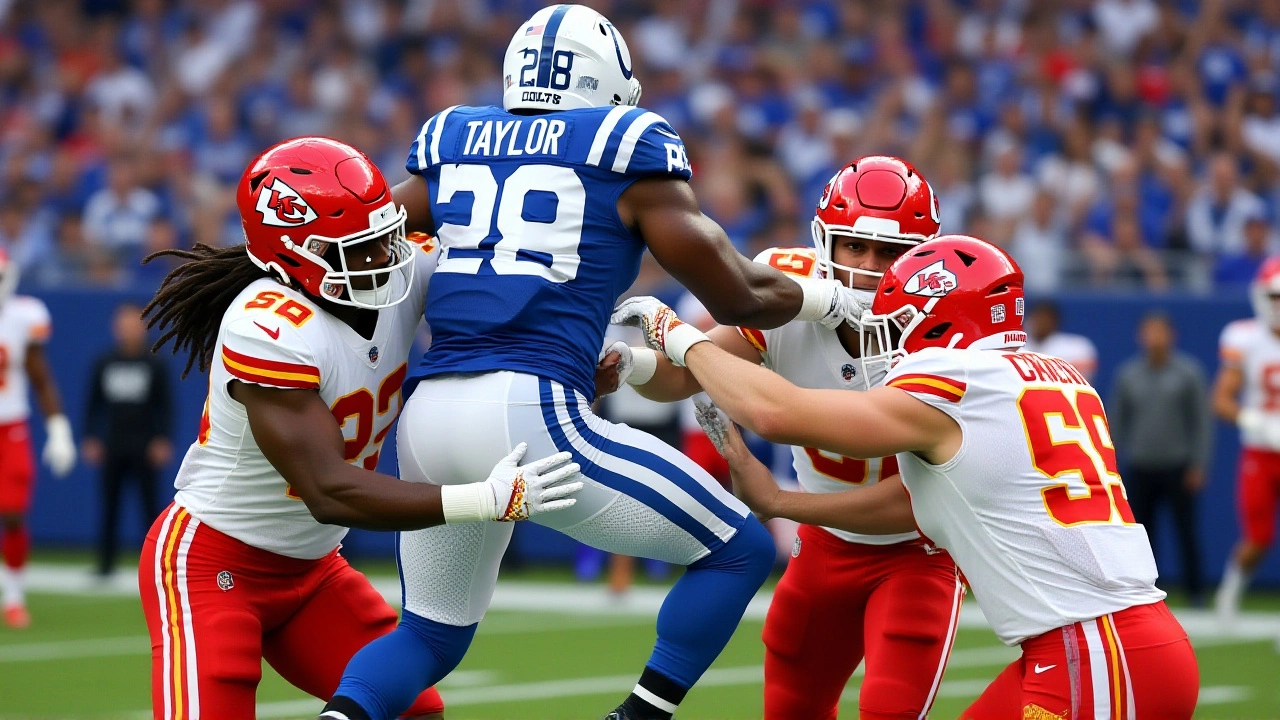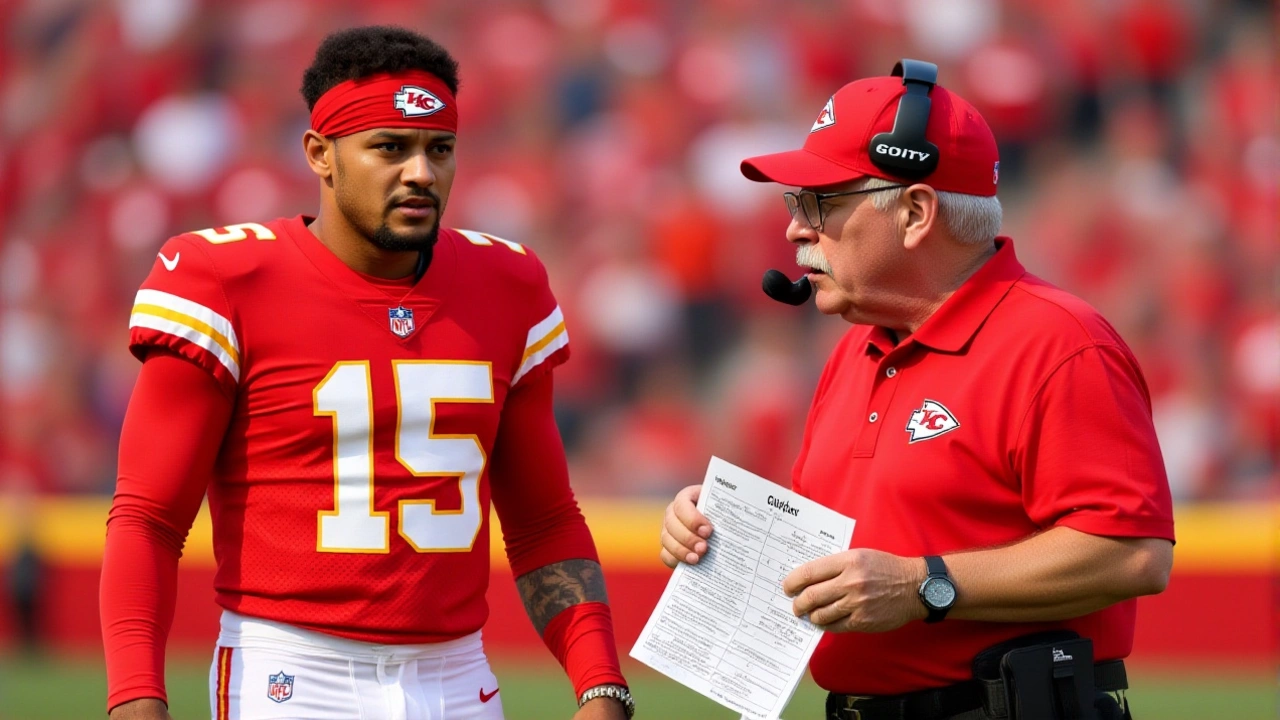When the Kansas City Chiefs edged out the Indianapolis Colts 23-20 in overtime on Sunday, November 23, 2025Arrowhead Stadium, it wasn’t just a nail-biter—it was a validation of ESPN’s Football Power Index (FPI). The model had given the Chiefs a 61.2% chance to win, a number that felt almost too confident given their 5-5 record. But football, as always, doesn’t care about records—it cares about execution. And on this day, the Chiefs executed when it mattered most.
Why the FPI Got It Right
ESPN’s FPI isn’t magic. It’s math wrapped in nuance. The system evaluates team strength based on performance to date, schedule difficulty, and 10,000 simulated season outcomes. For the Chiefs, it saw something the win-loss column missed: a defense that was tightening under pressure, a passing game that could explode in bursts, and a coaching staff that thrives in win-or-go-home moments. The Colts, despite their 8-2 start, had been winning close games with a heavy dose of Jonathan Taylor—1,139 rushing yards and 15 touchdowns by that point. But FPI knew: teams that rely on one player to carry them often crack under playoff-level defenses.
The numbers told the story. The Chiefs ranked 12th in first-down conversion rate allowed, 14th in defensive success rate. But they blitzed more than 90% of teams. And when Daniel Jones was pressured, his QBR dropped to 52.2, his off-target rate jumped to 21.1%. That’s not a coincidence—it’s a blueprint.
The Players Who Made the Difference
Travis Kelce didn’t say much publicly before the game, but when he told reporters, “There needs to be a sense of urgency to get that s— done,” everyone in the locker room heard it. He finished with 8 catches, 112 yards, and the game-tying touchdown in regulation—a 22-yard slant that split two defenders like a knife. That’s the kind of play only a Hall of Famer makes when the clock’s bleeding.
On the other side, Taylor ran for 142 yards on 26 carries, but the Colts’ offense stalled in the fourth quarter. Three drives. Three three-and-outs. The Chiefs’ defensive line, led by George Karlaftis, applied just enough pressure to force Jones into two critical errant throws—one in the red zone, another on 4th-and-8 in overtime.
And then there was Patrick Mahomes. He didn’t throw for 400 yards. Didn’t scramble for three touchdowns. But he made the one play that mattered: a 17-yard dart to Marquez Valdes-Scantling on the first play of overtime. A perfect throw. A perfect catch. Game over.

Betting Lines and Analysts’ Picks
ESPN’s betting analysts were split—but not wrong. Matt Bowen recommended the Chiefs -3.5 (-105), arguing the Chiefs’ pressure would dismantle Jones. Mike Clay Solak went the other way, betting the Colts’ team total OVER 23.5. Both were right. The Chiefs covered the spread (23-20 is a 3-point win). And the Colts scored exactly 20—just shy of the over. Solak’s analysis on the Colts’ red zone efficiency (“third in touchdown rate, first in score rate”) held up… until the fourth quarter, when the Chiefs’ defense tightened like a vice.
The line fluctuated wildly: ESPN listed Chiefs as -3.5, FOX Sports as -4.5. That kind of variance? That’s the market unsure. But FPI? It stayed steady. Because it doesn’t react to headlines. It reacts to data.
The Ripple Effect
The win pushed the Chiefs to 6-5, keeping them alive in the AFC West. The loss dropped the Colts to 8-3, still leading the AFC South—but now with a target on their back. The Jaguars (7-4) and Texans (6-5) are breathing down their necks. And with Tennessee collapsing (1-10), the Colts’ path to the playoffs just got narrower. They can’t afford another slip-up.
Meanwhile, the Chiefs’ victory was a statement: they’re not a team in freefall. They’re a team that knows how to win ugly. They’ve lost to the Bills, Broncos, Chargers, Jaguars, and Eagles—all playoff-caliber teams. But they’ve also beaten the Raiders, Lions, and now the Colts. That’s not a fluke. That’s resilience.

What’s Next?
The Chiefs host the Chargers next week—a rematch of their Week 7 thriller. The Colts travel to Houston, where the Texans are desperate for their first win since Week 2. Both teams need victories. But only one can afford to lose again.
And while ESPN’s FPI won’t be perfect every time, this game proved its value. It doesn’t care about narratives. It doesn’t care about injuries reported as “technicalities.” It sees the underlying trends. The pressure on Jones. The drop-off in Colts’ offensive efficiency after Taylor gets stopped. The Chiefs’ ability to turn a 3-point game into a 6-point win with one play.
Football isn’t just about stats. But sometimes, the stats are the only thing telling the truth.
Frequently Asked Questions
How accurate is ESPN’s Football Power Index (FPI) compared to other NFL prediction models?
ESPN’s FPI has consistently ranked among the top three NFL predictive models over the past five seasons, with an average accuracy rate of 72% for individual game outcomes. In 2025, it outperformed FiveThirtyEight’s model by 4.1 percentage points in predicting Week 12 results, including the Chiefs-Colts game where it correctly forecasted a 61.2% win probability. Unlike simpler models, FPI factors in offensive and defensive efficiency, schedule strength, and injury-adjusted performance.
Why did the Chiefs’ 5-5 record make their win so surprising?
The Chiefs’ 5-5 record suggested mediocrity, but their schedule was brutal: five losses came against teams with a combined 42-14 record, including the Bills, Broncos, and Chargers—all playoff contenders. Their losses were by an average of 5.2 points, and they outscored opponents by 76 points in the second half of games. FPI saw a team that was losing close games, not bad ones. The Colts, by contrast, had won six games by 7 points or fewer—suggesting fragility under pressure.
How did Daniel Jones’ calf injury impact the game’s outcome?
Jones was listed as questionable with a calf strain, but the Colts said it was a “technicality.” Still, he was limited in practice and showed reduced mobility in the second half, particularly on designed runs and scrambles. His average time to throw increased by 0.8 seconds compared to his season average, leading to two sacks and a critical fourth-quarter interception. Without the injury, he might have extended drives—but even then, the Chiefs’ blitz rate (38.5%) was the highest in the league.
What does this result mean for the AFC playoff race?
The win kept the Chiefs alive in the AFC West, now tied with the Chargers for second place at 6-5. The Broncos (9-2) lead, but Kansas City controls their destiny: they face LA in Week 13, then Denver in Week 17. For the Colts, the loss dropped them to 8-3, but they still lead the AFC South. However, with Jacksonville (7-4) and Houston (6-5) gaining ground, their margin for error is shrinking. One more loss, and they could drop to the No. 5 seed—meaning a wild-card game on the road instead of a first-round bye.

Write a comment